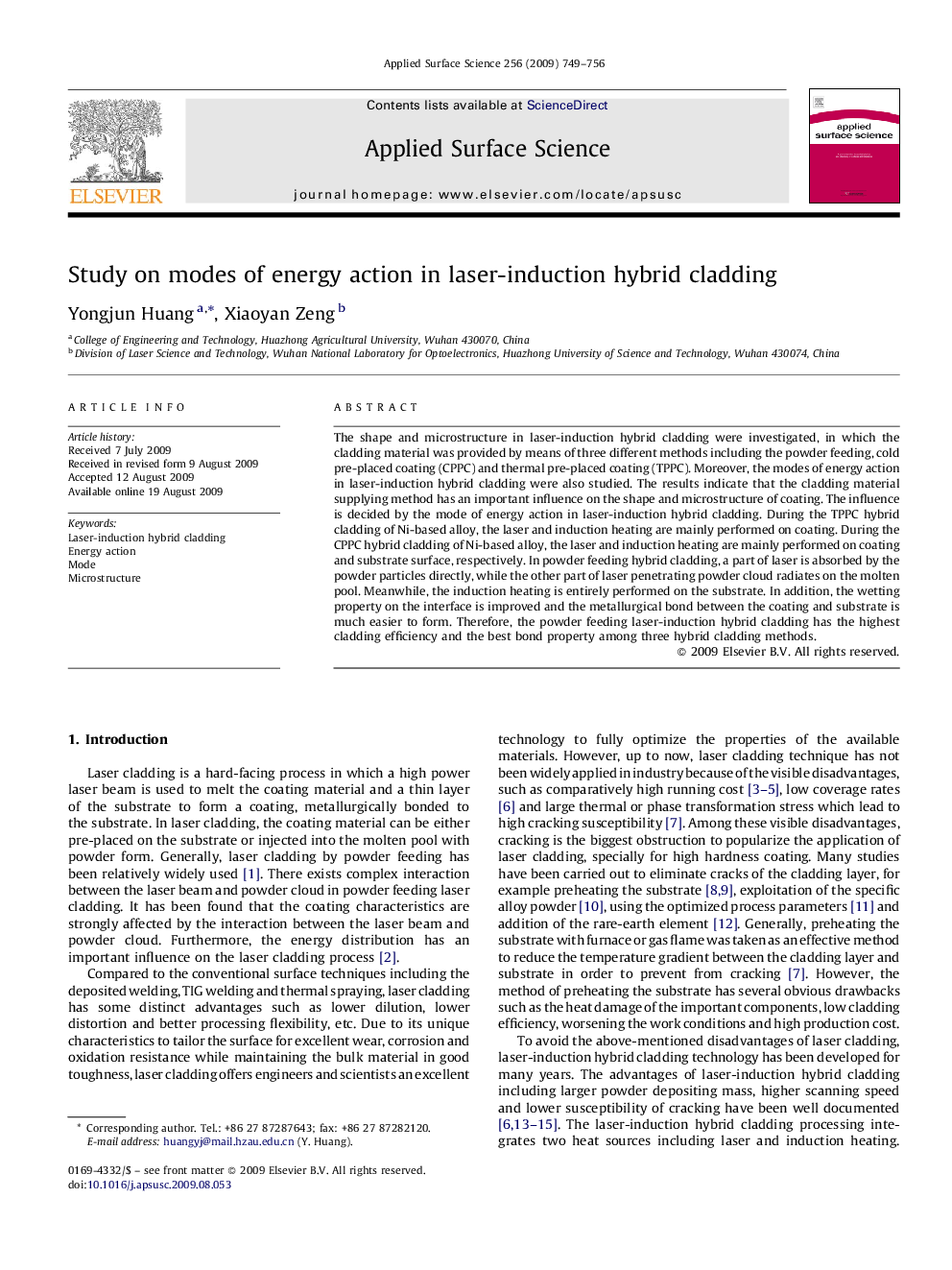| Article ID | Journal | Published Year | Pages | File Type |
|---|---|---|---|---|
| 5364089 | Applied Surface Science | 2009 | 8 Pages |
Abstract
The shape and microstructure in laser-induction hybrid cladding were investigated, in which the cladding material was provided by means of three different methods including the powder feeding, cold pre-placed coating (CPPC) and thermal pre-placed coating (TPPC). Moreover, the modes of energy action in laser-induction hybrid cladding were also studied. The results indicate that the cladding material supplying method has an important influence on the shape and microstructure of coating. The influence is decided by the mode of energy action in laser-induction hybrid cladding. During the TPPC hybrid cladding of Ni-based alloy, the laser and induction heating are mainly performed on coating. During the CPPC hybrid cladding of Ni-based alloy, the laser and induction heating are mainly performed on coating and substrate surface, respectively. In powder feeding hybrid cladding, a part of laser is absorbed by the powder particles directly, while the other part of laser penetrating powder cloud radiates on the molten pool. Meanwhile, the induction heating is entirely performed on the substrate. In addition, the wetting property on the interface is improved and the metallurgical bond between the coating and substrate is much easier to form. Therefore, the powder feeding laser-induction hybrid cladding has the highest cladding efficiency and the best bond property among three hybrid cladding methods.
Related Topics
Physical Sciences and Engineering
Chemistry
Physical and Theoretical Chemistry
Authors
Yongjun Huang, Xiaoyan Zeng,
